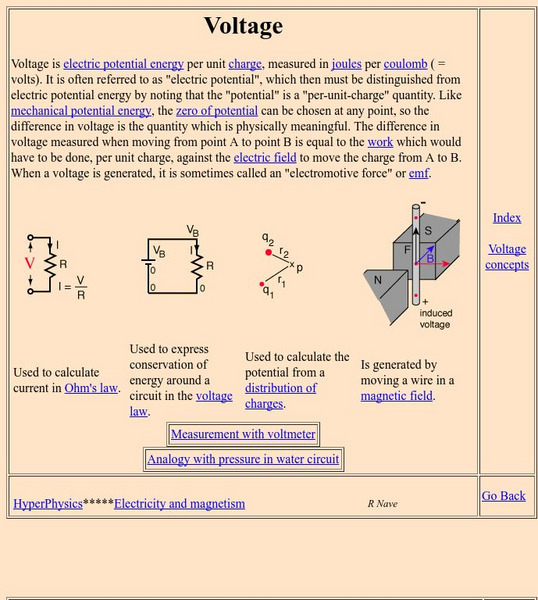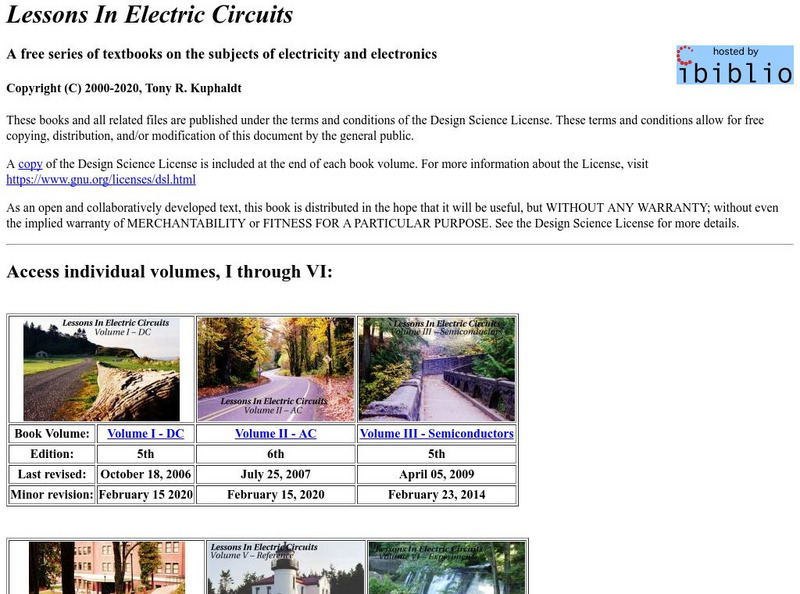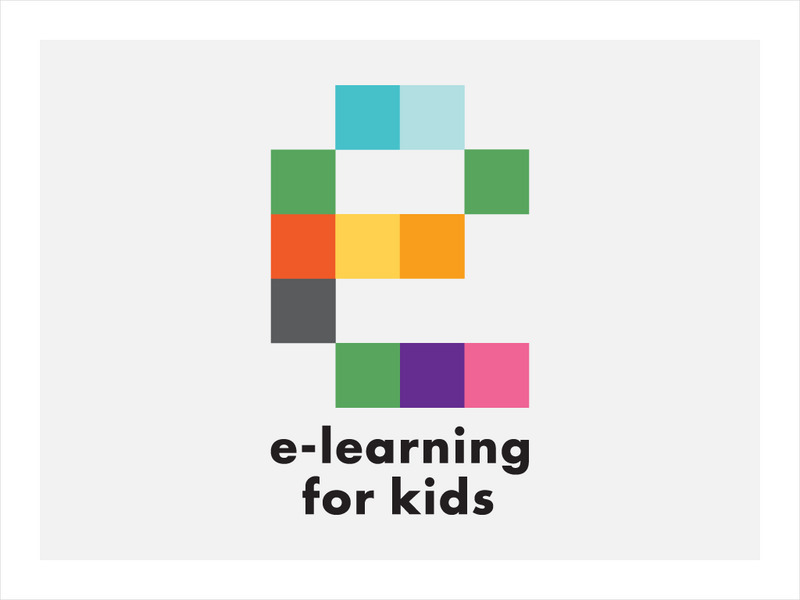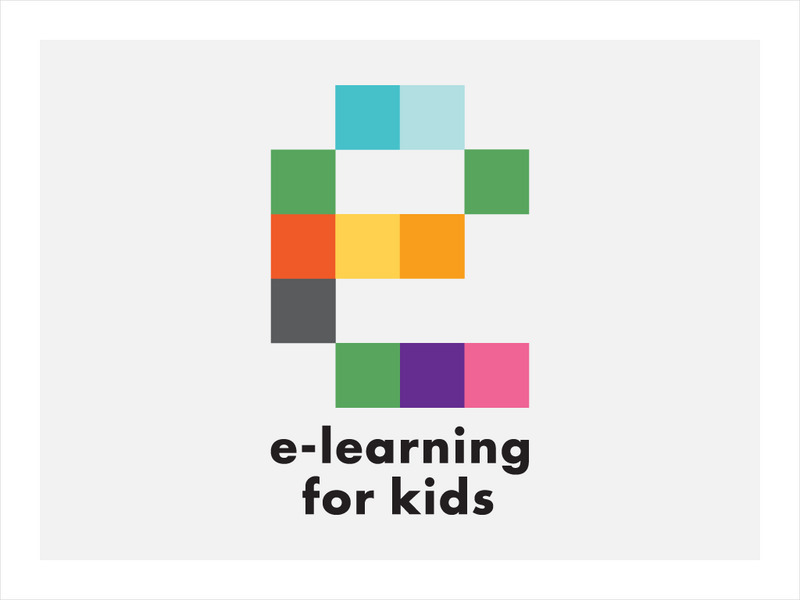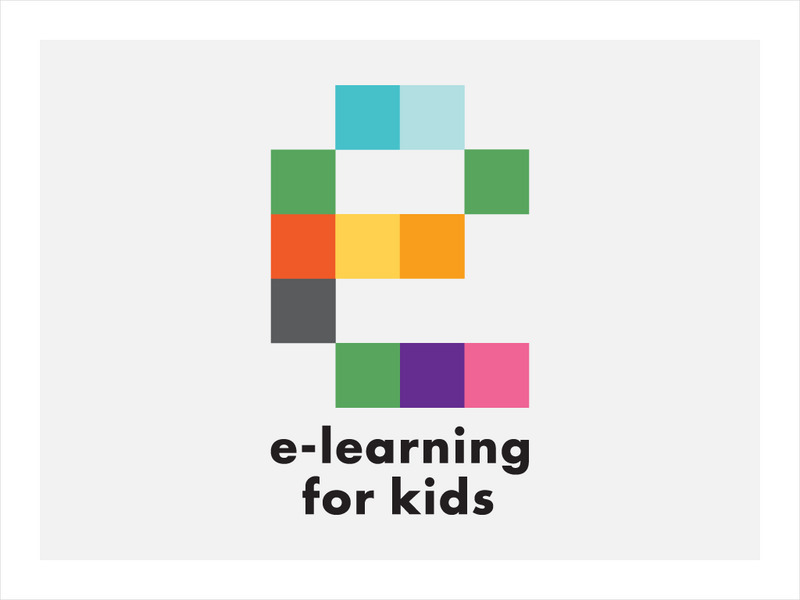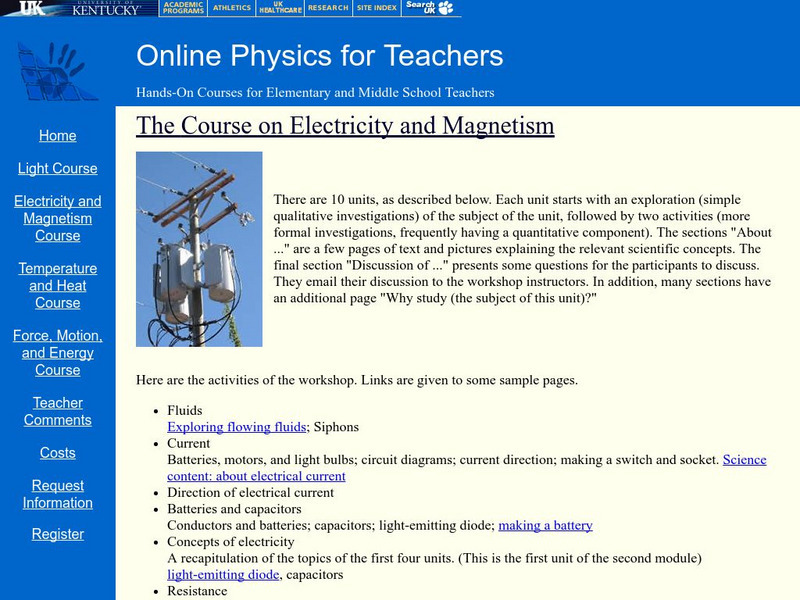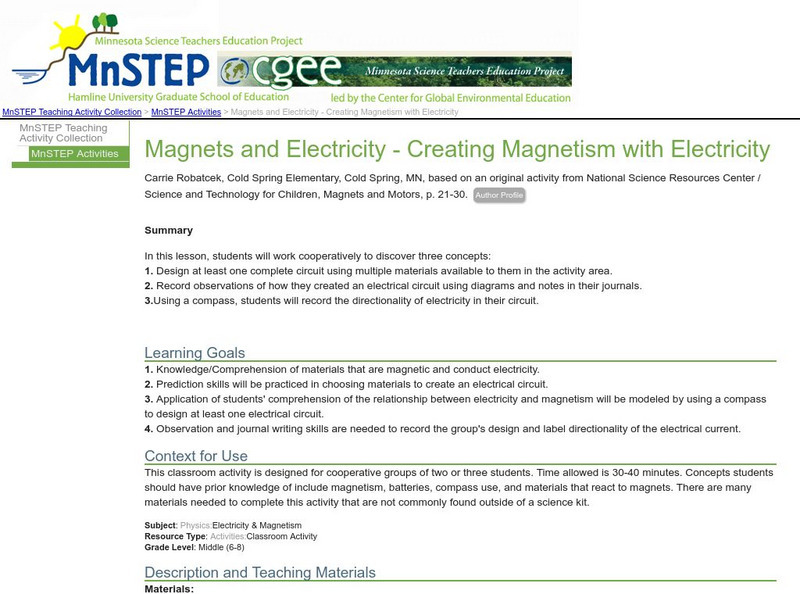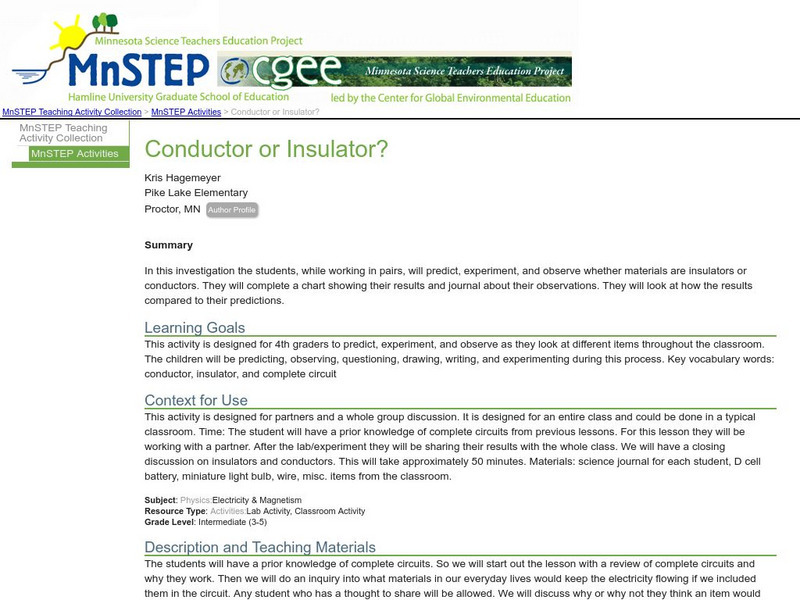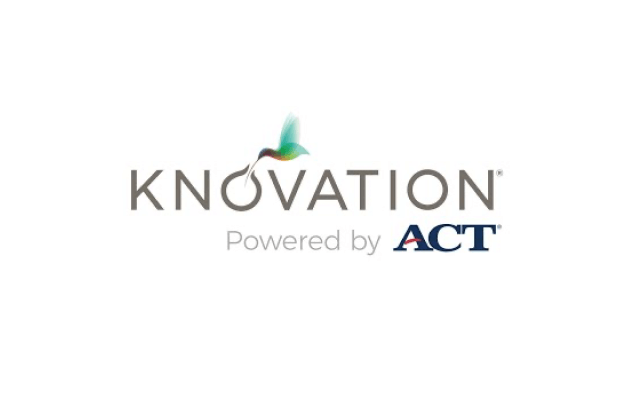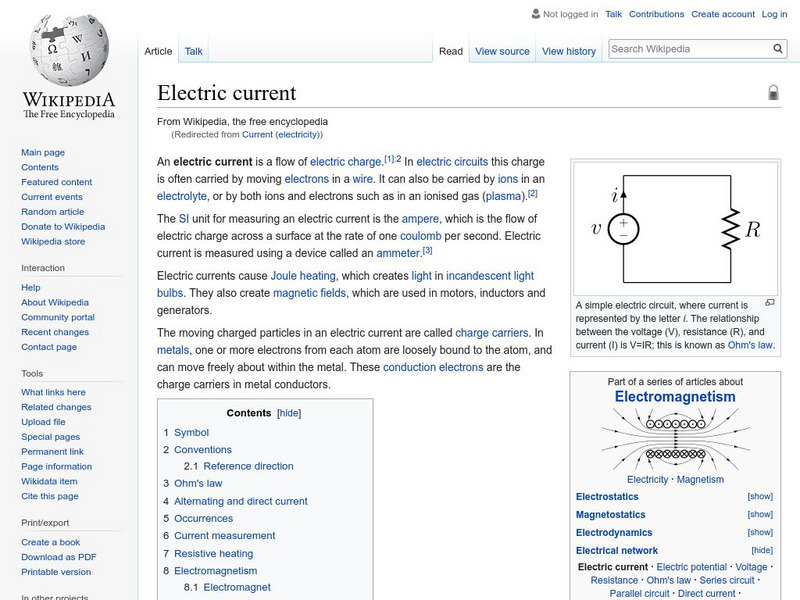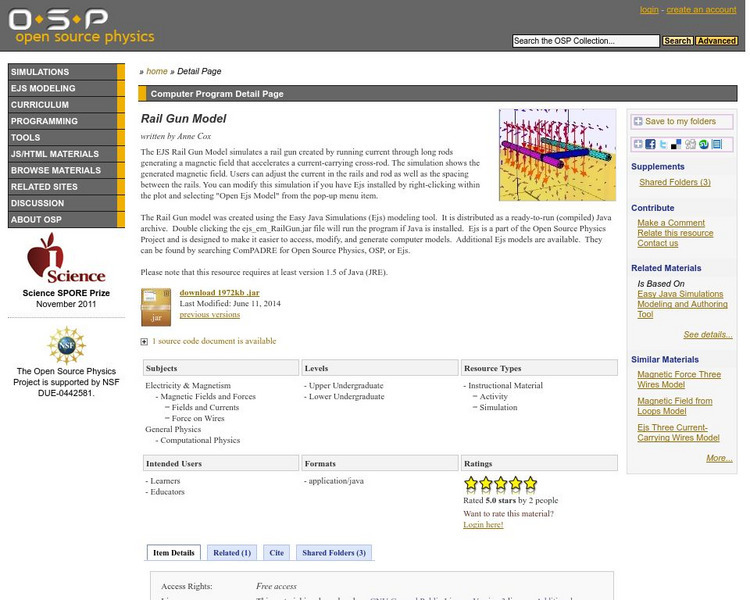Georgia State University
Georgia State University: Hyper Physics: Voltage
Electrical currents and voltage are defined and illustrated.
ibiblio
Ibiblio: Lessons in Electric Circuits
Learn anything you ever wanted to know and more about electrical circuits here. Complete with in-depth explanations and detailed diagrams.
E-learning for Kids
E Learning for Kids: Science: Arctic Ocean: What Are Conductors and Insulators?
Visit Vlad and learn about the properties of conductors and insulators, and what materials are used for them.
E-learning for Kids
E Learning for Kids: Science: Iceland: What Is Electricity?
Go on a fishing trip with Martin and his grandfather. They use a lot of electrical equipment. Help him find out which items use electricity.
E-learning for Kids
E Learning for Kids: Science: Inuit Village: How Can We Use Electricity Safely?
Visit Adlet in the Inuit village, and help her find out how she can use electricity safely.
E-learning for Kids
E Learning for Kids: Science: Norway: What Happens When Parts of a Circuit Are Changed?
Join Mathias as he takes care of the electrical problems in his uncle's office. Help him figure it out, and fix the lights.
E-learning for Kids
E Learning for Kids: Science: Vikings: What Is an Electric Circuit?
The god of thunder, Thor, controls thunder and lightning. Let's ask Thor about electric circuits.
University of Kentucky
Virtual Workshop: The Course on Electricity & Magnetism
On line course on Electricity and Magnetism for graduate credit or professional development, that emphasizes hands on activities you can use in your classroom.
Science Education Resource Center at Carleton College
Serc: How Do Light Bulbs Work?
A guided inquiry that involves observation of the parts of a light bulb in a lab.
Science Education Resource Center at Carleton College
Serc: Magnets and Electricity: Creating Magnetism With Electricity
Students will work in small groups to design at least one complete circuit using multiple materials. They will record their observations of how they created an electrical circuit using diagrams and notes in their journals. Using a...
Science Education Resource Center at Carleton College
Serc: Conductor or Insulator?
In this investigation the students predict, experiment, and observe whether materials are insulators or conductors.
Science Education Resource Center at Carleton College
Serc: Electric Circuits Guided Inquiry
An electrical circuit guided inquiry where students investigate what an electric circuit is, the main parts of a circuit and the difference between series and parallel circuits. Students groups create a circuit using materials provided...
Museum of Science
The Atom's Family: Electrical Safety
Help Frankenstein find out about electrical safety by clicking on the haunted house characters to find out what they are doing wrong.
Wikimedia
Wikipedia: Current (Electricity)
Wikipedia offers detailed information on electrical current, including many hyperlinked related terms.
Other
California Energy Commission: Coloring Book
At this site from California Energy Commission, you can learn more about electricity safety with this coloring book. Teach children how to use electricity safely.
American Association of Physics Teachers
Com Padre Digital Library: Open Source Physics: Rail Gun Model
Simulate the movement of a rail gun in this interactive model. Learn how a magnetic field is generated by running electrical current through long rods that accelerates a current-carrying cross-rod.
Open Curriculum
Open Curriculum: Electricity and Circuits
This article helps students understand the concepts of electricity and circuits.
Other
Easyphysics: Chapter 13 Current Electricity
Learners investigate current electricity. Some topics examined are voltage law, Ohm?s law, and electric resistance. The resource includes example problems with solutions and a chapter quiz.
Other
Beginner's Guide to Measurement in Electronic and Electrical Engineering [Pdf]
The National Physical Laboratory, which is the UK's National Measurement Institute, offers a Beginner's Guide to Measurements in Electronics and Electrical Engineering. Discusses how electric currents are measured and offers images.
NC State University
The Engineering Place: Battery Making
Using simple materials, students will learn how to create batteries, and about the relationship between voltage and current.
National High Magnetic Field Laboratory
Magnet Academy: Galvanometer
This tutorial illustrates how a galvanometer, an instrument that detects and measures small amounts of current in an electrical circuit, works. (Java tutorial)
National High Magnetic Field Laboratory
Magnet Academy: Audion
In 1906, American physicist Lee De Forest invented the Audion (or triode), building on John Fleming's discovery of the diode just a few years before.
National High Magnetic Field Laboratory
Magnet Academy: Current Flow
This tutorial illustrates how the flow of water through a system of pipes can be used to understand the flow of current through an electric circuit.
National High Magnetic Field Laboratory
Magnet Academy: Rheostat
After discovering the nature of electrical resistance, scientists devised instruments like this one to measure and control it. (Java tutorial)


